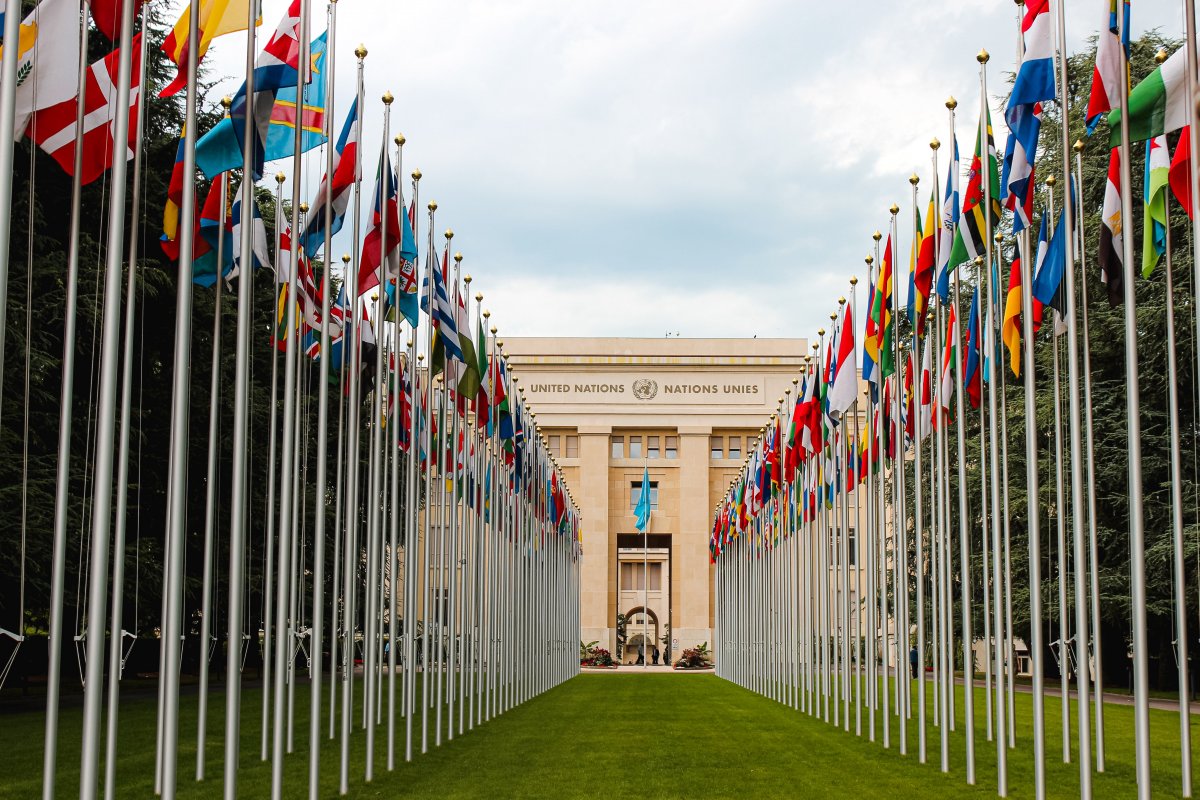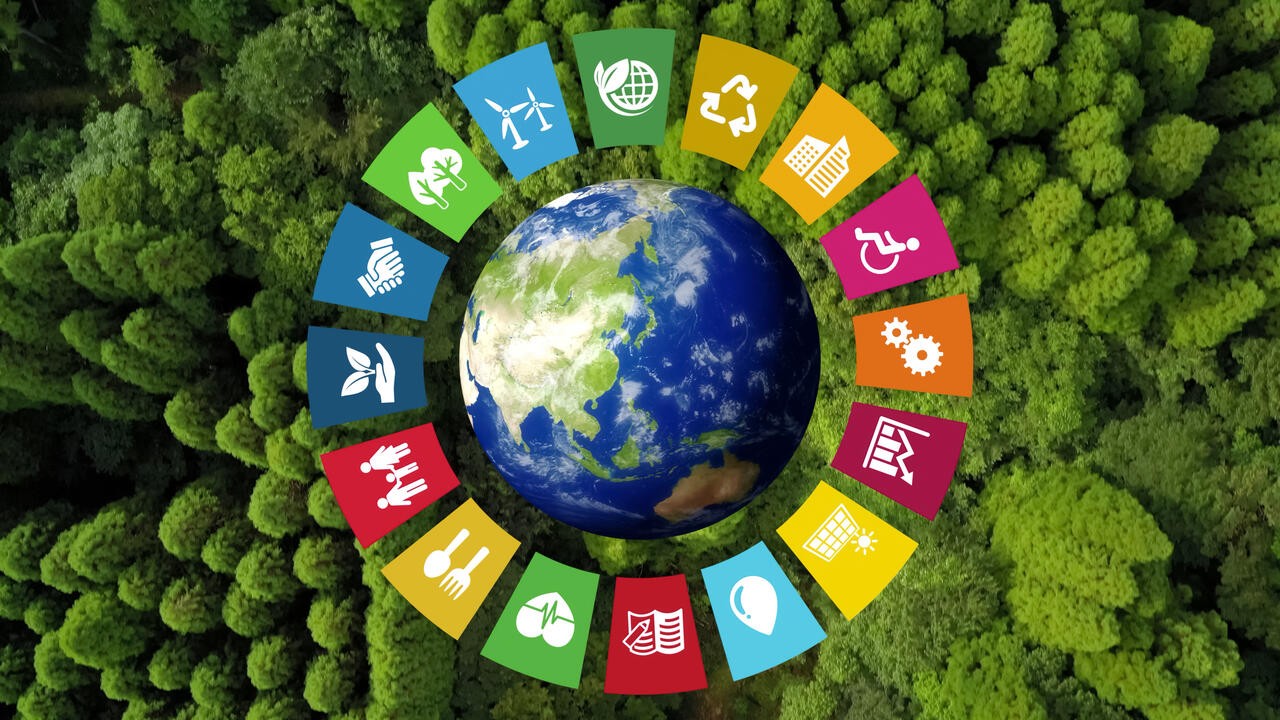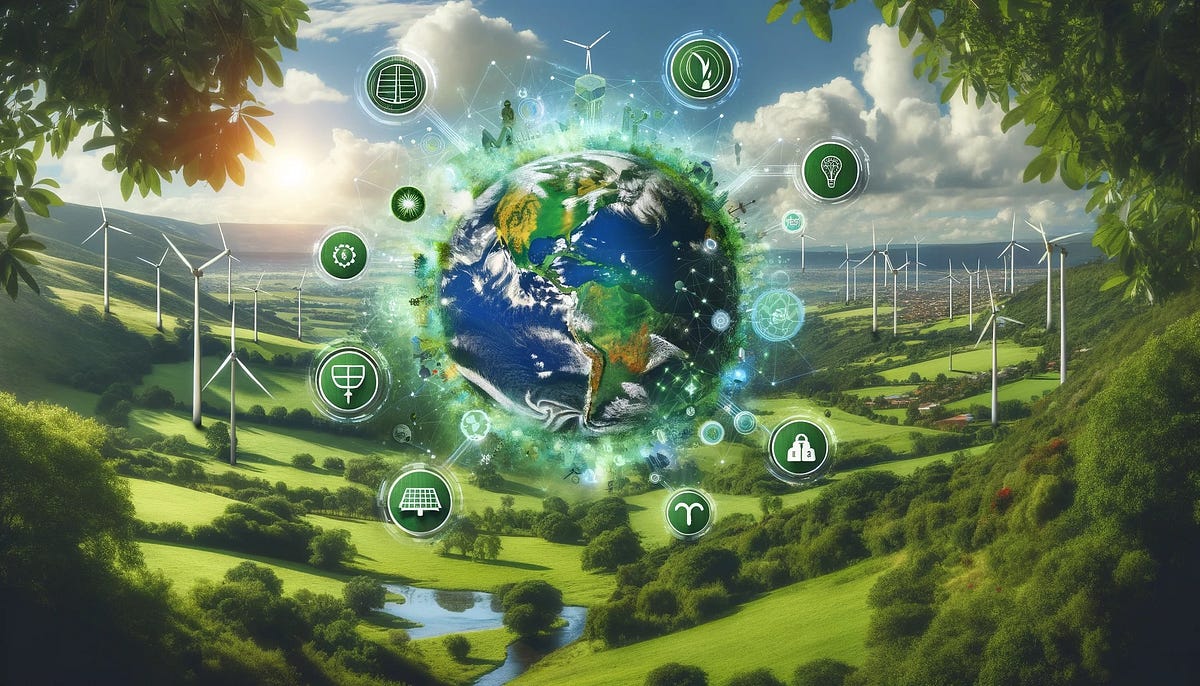The Imperative of Environmental Conservation: Sustaining Our Planet for Future Generations
Introduction
In the midst of escalating climate change, vanishing biodiversity, and burgeoning pollution, the imperative for environmental conservation has never been more pressing. The health of our planet is intricately linked to the well-being of all life forms, including humans. Thus, safeguarding the environment is not merely a choice but a moral obligation. This essay delves into the multifaceted aspects of environmental conservation, exploring its significance, challenges, and potential solutions in a world grappling with ecological crises.
The Significance of Environmental Conservation
Environmental conservation encompasses a wide array of efforts aimed at preserving natural resources, protecting ecosystems, and mitigating human-induced impacts on the environment. At its core, conservation seeks to maintain the delicate balance of nature upon which all life depends. From pristine rainforests to vast oceans, every ecosystem plays a vital role in sustaining biodiversity and providing essential services such as clean air, fresh water, and fertile soil. Furthermore, conservation efforts are essential for combating climate change by preserving carbon sinks, such as forests, and reducing greenhouse gas emissions.
Challenges to Conservation Efforts
Despite growing awareness of environmental issues, conservation efforts face numerous challenges, ranging from political inertia to economic interests. Short-term economic gains often take precedence over long-term environmental sustainability, leading to the exploitation of natural resources and degradation of ecosystems. Moreover, conflicting priorities among stakeholders, inadequate funding, and insufficient regulatory frameworks hinder effective conservation action. Climate change exacerbates these challenges, altering ecosystems and threatening vulnerable species with extinction. Addressing these obstacles requires a concerted global effort, combining policy interventions, technological innovations, and community engagement.
Policy Interventions
Government policies play a crucial role in shaping environmental conservation efforts at both national and international levels. Legislation aimed at protecting endangered species, preserving critical habitats, and regulating pollution helps mitigate environmental degradation. Additionally, international agreements such as the Paris Agreement on climate change and the Convention on Biological Diversity provide frameworks for global cooperation in addressing pressing environmental issues. However, the effectiveness of such policies often depends on their enforcement, which can be undermined by political interests and lack of accountability.
Technological Innovations
Advancements in technology offer promising solutions for environmental conservation, enabling more efficient resource management and pollution control. Remote sensing techniques provide valuable data for monitoring changes in land use, deforestation, and biodiversity loss. Furthermore, renewable energy technologies offer alternatives to fossil fuels, reducing carbon emissions and mitigating climate change. Innovations in waste management, such as recycling and composting, help minimize the environmental impact of human activities. However, technological solutions must be accompanied by behavioral changes and policy support to achieve meaningful conservation outcomes.
Community Engagement
Engaging local communities in conservation efforts is essential for fostering sustainable practices and ensuring the success of environmental initiatives. Indigenous peoples and local communities often possess traditional knowledge and practices that promote ecosystem resilience and biodiversity conservation. By involving communities in decision-making processes and recognizing their rights to land and resources, conservation efforts can benefit both nature and people. Furthermore, environmental education and awareness-raising campaigns empower individuals to take action and advocate for positive change in their communities.
Conservation Success Stories
Despite the formidable challenges facing environmental conservation, there are inspiring success stories that demonstrate the potential for positive change. Conservation projects aimed at restoring degraded ecosystems, reintroducing endangered species, and establishing protected areas have yielded tangible results. For example, the reintroduction of wolves in Yellowstone National Park in the United States led to a cascade of ecological benefits, including the restoration of vegetation and the regulation of herbivore populations. Similarly, community-based conservation initiatives in countries like Costa Rica have contributed to significant gains in forest cover and biodiversity conservation.
Environmental conservation is an urgent imperative that requires collective action and commitment from governments, businesses, communities, and individuals. By preserving ecosystems, protecting biodiversity, and mitigating climate change, we can ensure a sustainable future for generations to come. Despite the formidable challenges we face, there is hope in the resilience of nature and the ingenuity of human innovation. Through concerted efforts and collaboration, we can safeguard the environment and secure a thriving planet for all.
Conservation Efforts in Marine Ecosystems
While terrestrial conservation efforts are crucial, the health of our planet also relies heavily on the preservation of marine ecosystems. Oceans cover over 70% of the Earth’s surface and support a vast array of marine life, from microscopic plankton to majestic whales. However, these vital ecosystems are facing unprecedented threats, including overfishing, habitat destruction, pollution, and climate change.
One of the most pressing issues facing marine conservation is overfishing, driven by the demand for seafood and the expansion of industrial fishing operations. Unsustainable fishing practices, such as bottom trawling and longlining, not only deplete fish stocks but also damage fragile marine habitats such as coral reefs and seagrass meadows. To address this challenge, marine conservation efforts focus on implementing sustainable fishing practices, establishing marine protected areas, and combating illegal, unreported, and unregulated fishing.
Marine protected areas (MPAs) play a crucial role in conserving marine biodiversity and ecosystems. These designated areas restrict or prohibit certain activities, such as fishing and mining, to safeguard sensitive habitats and species. MPAs not only provide refuge for marine life but also support fisheries by serving as spawning grounds and replenishment zones. However, the effectiveness of MPAs depends on adequate enforcement, stakeholder participation, and scientific monitoring to ensure their ecological integrity and long-term sustainability.
Pollution poses another significant threat to marine ecosystems, with plastic pollution, oil spills, and nutrient runoff wreaking havoc on marine life and habitats. Plastic pollution, in particular, has become a pervasive problem, with millions of tons of plastic waste entering the oceans each year. Marine animals ingest or become entangled in plastic debris, leading to injury, suffocation, and death. Addressing marine pollution requires concerted efforts to reduce plastic consumption, improve waste management practices, and develop innovative solutions for cleaning up marine debris.
Climate change poses perhaps the greatest threat to marine ecosystems, with rising temperatures, ocean acidification, and sea-level rise disrupting marine habitats and species’ distributions. Coral reefs, often referred to as the “rainforests of the sea,” are especially vulnerable to climate change, with increased temperatures leading to coral bleaching events and mass die-offs. Additionally, ocean acidification, resulting from the absorption of carbon dioxide by seawater, impairs the ability of marine organisms to build and maintain their calcium carbonate structures.
To mitigate the impacts of climate change on marine ecosystems, conservation efforts focus on reducing greenhouse gas emissions, enhancing the resilience of marine habitats, and supporting the adaptation of vulnerable species. Strategies such as coral reef restoration, mangrove reforestation, and the creation of climate-resilient marine protected areas aim to bolster the capacity of marine ecosystems to withstand environmental stressors. Furthermore, integrating traditional ecological knowledge and community-based approaches into conservation efforts can enhance their effectiveness and promote local stewardship of marine resources.
Marine conservation is essential for preserving the health and biodiversity of our oceans, which are vital to the well-being of the planet and all life forms. By addressing threats such as overfishing, habitat destruction, pollution, and climate change, we can protect marine ecosystems and ensure their resilience in the face of environmental challenges. Through collaboration between governments, scientists, conservation organizations, and local communities, we can work towards sustainable management and conservation of our oceans for future generations.
Conservation Strategies for Biodiversity Hotspots
Biodiversity hotspots are regions of the world that harbor exceptionally high levels of species richness and endemism, making them priorities for conservation efforts. These areas are often characterized by unique ecosystems, such as tropical rainforests, coral reefs, and montane grasslands, that support a wealth of plant and animal species found nowhere else on Earth. However, biodiversity hotspots are also among the most threatened ecosystems due to factors such as habitat loss, deforestation, climate change, and invasive species.
Conservation strategies for biodiversity hotspots aim to protect and restore critical habitats, safeguard endangered species, and promote sustainable land use practices. One approach involves establishing protected areas, such as national parks, wildlife reserves, and biological corridors, to conserve biodiversity and provide refuge for threatened species. These protected areas serve as havens for wildlife, protect vital ecosystem services, and support ecotourism and scientific research.
In addition to protected areas, conservation efforts in biodiversity hotspots often involve working with local communities to promote sustainable livelihoods and reduce pressures on natural resources. Community-based conservation initiatives empower local people to become stewards of their natural heritage, fostering a sense of ownership and responsibility for conservation outcomes. By integrating traditional knowledge with modern conservation practices, these initiatives can enhance the effectiveness and long-term sustainability of conservation efforts.
Furthermore, biodiversity hotspots benefit from international cooperation and collaboration among governments, non-governmental organizations (NGOs), and the private sector. Multilateral agreements, such as the Convention on Biological Diversity and the Ramsar Convention on Wetlands, provide frameworks for global cooperation in conserving biodiversity and promoting sustainable development. Funding mechanisms, such as the Global Environment Facility and the Green Climate Fund, support conservation projects in biodiversity hotspots by providing financial resources and technical assistance.
Despite the formidable challenges facing biodiversity hotspots, there are success stories that demonstrate the potential for conservation to make a difference. For example, the Madagascar Biodiversity Hotspot, one of the world’s most biologically diverse regions, has benefited from concerted conservation efforts aimed at protecting its unique ecosystems and endemic species. Conservation organizations, such as the Madagascar National Parks Association and the Wildlife Conservation Society, work alongside local communities to establish protected areas, restore degraded habitats, and promote sustainable livelihoods.
Conserving biodiversity hotspots is essential for safeguarding Earth’s rich tapestry of life and ensuring the resilience of ecosystems in the face of global environmental challenges. By protecting critical habitats, promoting sustainable land use practices, and engaging local communities, we can preserve these irreplaceable natural treasures for future generations. However, achieving conservation goals in biodiversity hotspots requires sustained commitment, collaboration, and innovative approaches that balance the needs of people and nature. Through collective action and shared stewardship, we can protect biodiversity hotspots and secure a sustainable future for all.
Conservation of Endangered Species
The conservation of endangered species is a critical aspect of environmental preservation, as it directly impacts the overall health and stability of ecosystems. Endangered species are those facing imminent risk of extinction due to factors such as habitat loss, poaching, pollution, and climate change. Each species plays a unique role in its ecosystem, and the loss of even a single species can have far-reaching consequences for biodiversity and ecosystem function.
Conservation efforts for endangered species involve a combination of strategies aimed at protecting habitats, preventing illegal trade, breeding and reintroducing individuals into the wild, and raising public awareness. One of the primary approaches is the establishment of protected areas and wildlife reserves that provide safe havens for endangered species to thrive and reproduce. These areas often require active management to address threats such as invasive species, habitat degradation, and human-wildlife conflict.
In addition to habitat protection, conservation efforts focus on combating illegal trade in endangered species, which remains a significant threat to many iconic species such as elephants, rhinos, and tigers. Strengthening law enforcement, enhancing international cooperation, and raising awareness about the consequences of wildlife trafficking are essential for reducing demand and disrupting criminal networks involved in the illegal wildlife trade.
Breeding and reintroduction programs play a crucial role in saving endangered species from extinction by bolstering dwindling populations and restoring them to their natural habitats. These programs often involve captive breeding in zoos, research facilities, or specialized breeding centers, followed by careful reintroduction into protected areas where suitable habitat and resources are available. However, successful reintroduction requires thorough planning, monitoring, and ongoing management to ensure the survival and reproductive success of released individuals.
Public awareness and education are essential components of endangered species conservation, as they inspire support for conservation initiatives and encourage behavior change to reduce human impacts on wildlife. Outreach programs, environmental education campaigns, and ecotourism initiatives help raise awareness about the importance of biodiversity, the threats facing endangered species, and the actions individuals can take to support conservation efforts.
Despite the challenges facing endangered species conservation, there have been notable successes in saving species from the brink of extinction. For example, the recovery of the California condor, one of the world’s rarest birds, from just 22 individuals in the 1980s to over 500 individuals today is a testament to the effectiveness of concerted conservation efforts. Similarly, the conservation of the giant panda in China, through habitat protection and captive breeding, has led to a significant increase in the wild population in recent decades.
The conservation of endangered species is a moral imperative and a vital component of ecosystem health and resilience. By protecting habitats, combating illegal trade, implementing breeding and reintroduction programs, and raising public awareness, we can safeguard endangered species and prevent their extinction. However, achieving conservation goals requires sustained commitment, collaboration, and innovative approaches that address the root causes of species decline. Through collective action and shared stewardship, we can ensure a future where endangered species thrive alongside humans in a biodiverse and sustainable world.
Addressing Climate Change
Climate change poses one of the most significant threats to the environment and all life on Earth. It is driven primarily by human activities, including the burning of fossil fuels, deforestation, industrial agriculture, and land-use changes. The consequences of climate change are far-reaching and include rising temperatures, extreme weather events, sea-level rise, shifts in precipitation patterns, and disruptions to ecosystems and biodiversity.
Addressing climate change requires urgent and ambitious action at both global and local levels. One of the key strategies is reducing greenhouse gas emissions by transitioning to renewable energy sources, improving energy efficiency, and implementing policies to limit carbon emissions from industries, transportation, and agriculture. Renewable energy technologies such as solar, wind, hydroelectric, and geothermal power offer clean alternatives to fossil fuels and can help mitigate climate change while promoting sustainable development.
In addition to mitigation, adaptation is essential for coping with the impacts of climate change that are already underway and unavoidable in the near term. Adaptation measures include enhancing resilience in vulnerable communities and ecosystems, implementing sustainable water management practices, developing climate-smart agriculture techniques, and building climate-resilient infrastructure. By investing in adaptation strategies, we can minimize the risks and vulnerabilities associated with climate change and protect livelihoods and ecosystems.
International cooperation is critical for addressing climate change effectively, as it is a global issue that transcends national boundaries. The Paris Agreement, adopted in 2015, represents a landmark international accord aimed at limiting global warming to well below 2 degrees Celsius above pre-industrial levels and pursuing efforts to limit it to 1.5 degrees Celsius. The agreement calls for nationally determined contributions from countries to reduce their greenhouse gas emissions and enhance their climate resilience.
However, achieving the goals of the Paris Agreement requires stronger commitments and more ambitious actions from all countries, particularly major emitters such as the United States, China, and India. Developed countries also have a moral and historical responsibility to provide financial and technological support to developing countries to help them transition to low-carbon economies and adapt to the impacts of climate change. Additionally, engaging non-state actors such as businesses, cities, and civil society organizations is essential for mobilizing climate action and driving innovation.
Public awareness and advocacy are critical for building political will and driving action on climate change. Education campaigns, grassroots movements, and youth activism play a vital role in raising awareness about the urgency of the climate crisis and holding governments and corporations accountable for their actions. By amplifying the voices of affected communities and advocating for equitable and just solutions, we can create momentum for transformative change and ensure a sustainable future for all.
Conclusion
In conclusion, addressing climate change is a monumental challenge that requires concerted efforts from governments, businesses, communities, and individuals worldwide. By reducing greenhouse gas emissions, promoting adaptation and resilience, strengthening international cooperation, and mobilizing public support, we can mitigate the impacts of climate change and build a more sustainable and resilient future for generations to come. The time for action is now, and each of us has a role to play in shaping a healthier and more prosperous world for all.




